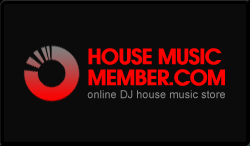Trance House is a popular sub-genre in trance music and contains elements of house, techno, and ambient music. By the late 1990s, trance became more focused on the anthemic qualities and melodies, moving away from arpeggiated analog synth patterns. Acoustic elements and spacey pads became popular with compositions leaned towards incremental changes à la progressive structures. Progressive trance contains distinctive sounds in many tracks, such as unusual basslines or original synthesized sounds, which generally makes it more "catchy". Phrases are usually a power of two number of bars in most typical progressive trance tracks. Phrases usually begin with the introduction of a new or different melody or rhythm.
Compared to trance, the progressive wing is usually deeper and more abstract, featuring a lower average bpm (around 125-135 instead of 130-160) and a recurrent melodic structure. This structure is intuitively described as consisting of three major structural elements: (1) build-up; (2) breakdown ; (3) climax. These three structural elements are expressed either temporally or in their intensity, if not both. A 'build-up' sequence can sometimes last up to 3 or even 4 minutes. Subtle incremental/decremental acoustic variations (i.e., gradual addition/subtraction of instruments) anticipate the transition to each subsequent structural element of the track. The initial build-up and the final break-down are generally very similar, adding a feel of symmetry to the general structure of the melody. Furthermore, a progressive trance track is usually longer than a regular trance track, ranging in length from 5-6 to even 12-13 minutes.
Although there is a general and increasing tendency to associate progressive trance with progressive house (or vice-versa), virtually rendering these two sub-genres identical, there are however distinctive characteristics apart from the strong similitudes between them: progressive trance inherits from its parent genre (trance) a wider melodic flexibility, while progressive house is usually darker and more minimal.
Some of the most representative names that currently work in this sub-genre are Laurent Veronnez, Sasha , Mike Dierickx, Matt Darey, Paul Oakenfold, Paul van Dyk, Vibrasphere, Armin Van Buuren, Tiesto, Brian Transeau (aka BT), and more recently, Markus Schulz.




